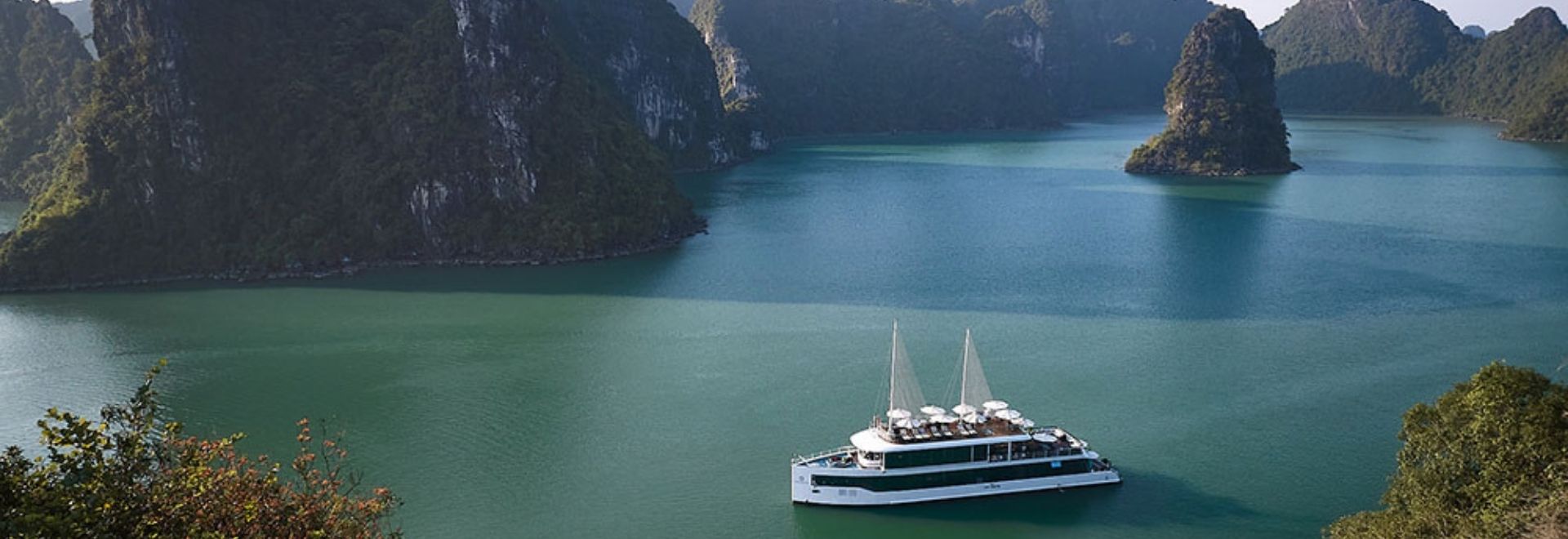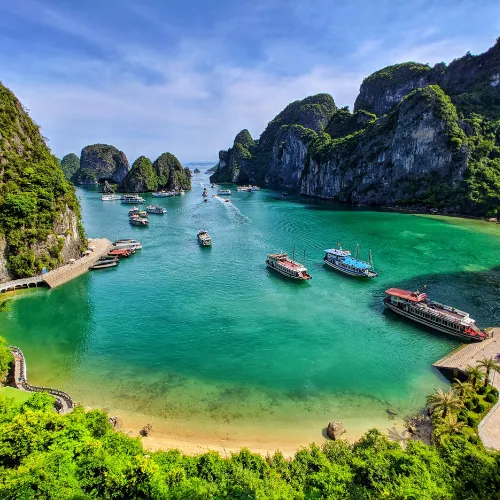Places to visit in Bangkok and things to do in Bangkok Thailand
Bangkok is a relatively young capital, established in 1782 after the Burmese sacked Ayutthaya, the former capital. A temporary base was set up on the western bank of the Chao Phraya River, in what is now Thonburi, before work started on the more defensible east bank.
The first king of the new dynasty, Rama I, built his palace at Ratanakosin, within a defensive ring of two (later expanded to three) canals, and this remains the city’s spiritual heart. This remains the best place to start your exploration, where the city’s most important and extravagant sights are located.
Initially, Bangkok was largely amphibious: only the temples and royal palaces were built on dry land, while ordinary residences floated on thick bamboo rafts on the river and canals.
A major shift in emphasis came in the second half of the nineteenth century, first under Rama IV (1851–68), who as part of his effort to restyle the capital along European lines built Bangkok’s first roads.
Modern Bangkok
Since World War II, and especially from the mid-1960s onwards, Bangkok has seen an explosion of modernisation. Most of the canals have been filled in, replaced by endless rows of cheap, functional concrete shophouses, high-rises and housing estates.
The benefits of Thailand’s economic boom since the 1980s have been concentrated in Bangkok, attracting migration from all over the country and making the capital ever more dominant.
Every aspect of national life is centralised in the city, but the mayor of Bangkok is not granted enough power to deal with the ensuing problems, notably that of traffic.
The Skytrain and the subway have undoubtedly helped, but the competing systems don’t intersect properly or ticket jointly, and it’s left to ingenious, local solutions such as the Khlong Saen Saeb canal boats and side-street motorbike taxis to keep the city moving.
Around Bangkok
Visiting Bangkok’s outskirts isn’t particularly popular as it harbours few attractions. However, there are a handful of places that make pleasant half-day excursions.
Mainly Chatuchak Weekend Market (which has over 8,000 stalls), the cultural theme-park of Muang Boran (explore one of the world’s largest museums with your private transport here), the rather more esoteric Prasart Museum, the upstream town of Nonthaburi and the tranquil artificial island of Ko Kred.
If you want to go a little further, visit Ayutthaya for the day: there’s excellent private tours that leave from Bangkok and take in no fewer than five UNESCO-sited temples.
If you’re travelling with children, you may want to visit the Mahanakhon SkyWalk where you can scale Bangkok’s highest building for panoramic views, or visit Sea Life Bangkok Ocean World to experience sharks and rays swimming over your head in the under-ocean tunnel.
Places to visit in Bangkok:
Ratanakosin
Any Bangkok city guide worth their salt will tell you that the place to start is Ratanakosin, the royal island on the east bank of the Chao Phraya, where the city’s most important and extravagant sights are located.
They include: the Grand Palace and adjoining royal temple, Wat Phra Kaeo; the Wang Na (Palace of the Second King), now the National Museum; Wat Pho, which predates the capital’s founding; Wat Mahathat, the most important centre of Buddhist learning in Southeast Asia; the National Theatre; the National Gallery; and Thammasat and Silpakorn universities.
Banglamphu and the Democracy Monument area
Immediately north of Ratanakosin, Banglamphu’s most notorious attraction is Thanon Khao San, a tiny sliver of a road built over a canal in 1892, whose multiple guesthouses and buzzing, budget-minded nightlife have made it an unmissable way-station for travellers through Southeast Asia.
There is plenty of cultural interest too, in a medley of idiosyncratic temples within a few blocks of nearby landmark Democracy Monument, and in the typical Bangkok neighbourhoods that connect them, many of which still feel charmingly old-fashioned.
Chinatown and Pahurat
When the newly crowned Rama I decided to move his capital across to the east bank of the river in 1782, the Chinese community living on the proposed site of his palace was obliged to relocate downriver, to the Sampeng area.
Two centuries on, Chinatown has grown into the country’s largest Chinese district, a sprawl of narrow alleyways, temples and shophouses packed between Charoen Krung (New Road) and the river.
Thonburi
For fifteen years between the fall of Ayutthaya in 1767 and the founding of Bangkok in 1782, the west-bank town of Thonburi stood in as the Thai capital.
Its time in the spotlight was too brief for the building of the fine monuments and temples, but some of its centuries-old canals, which once transported everyone and everything, have endured. It is these and the ways of life that depend on them that constitute Thonburi’s main attractions.
The most popular way to explore these old neighbourhoods is by boat, but joining a bicycle tour of the older neighbourhoods is also very rewarding.
Dusit
The spacious, leafy area known as Dusit has been a royal district since the reign of Rama V, King Chulalongkorn (1860–1910). The first Thai monarch to visit Europe, Rama V returned with radical plans for the modernisation of his capital, the fruits of which are most visible in Dusit, notably at Vimanmek Palace and Wat Benjamabophit, the so-called “Marble Temple”.
Dusit is also the venue for the spectacular annual Trooping the Colour, when hundreds of Royal Guards demonstrate their allegiance to the king by parading around Royal Plaza. Across from Chitrlada Palace, Dusit Zoo makes a pleasant enough place to take the kids.
Downtown Bangkok
Downtown Bangkok is central to the colossal expanse of Bangkok as a whole, but rather peripheral in a sightseer’s perception of the city. In this modern high-rise area, you’ll find the main shopping centres around Siam Square.
Travel further east, you’ll find yet more shopping malls around the noisy and glittering Erawan Shrine, where Rama I becomes Thanon Ploenchit, an intersection known as Ratchaprasong. It’s possible to stroll in peace above the cracked pavements, noise and fumes of Thanon Rama I, by using the elevated walkway that runs beneath the Skytrain lines.
The city outskirts
A handful of places that make pleasant half-day escapes, principally Chatuchak Weekend Market, the cultural theme-park of Muang Boran, the upstream town of Nonthaburi and the tranquil artificial island of Ko Kred.
Thinking of travelling to Bangkok? Start planning by learning about how to get to Thailand.
Top things to do in Bangkok – A Bangkok city guide boiled down into nine brilliant things to do:
- The Grand Palace/ Wat Pho: Admire the Reclining Buddha and the lavish architecture, and leave time for a relaxing massage.
- The National Museum: The central repository of the country’s artistic riches.
- Thanon Khao San: Legendary hangout for Southeast Asia backpackers; the place for cheap sleeps, baggy trousers and tall tales.
- The canals of Thonburi: See the Bangkok of yesteryear on a touristy but memorable longtail-boat ride.
- Jim Thompson’s House – An elegant Thai design classic, can be discovered on a guided tour including a weaving community visit.
- Chatuchak Weekend Market: Eight thousand open-air stalls selling everything from triangular pillows to secondhand Levis.
- The 63rd-floor sundowner: Fine cocktails and jaw-dropping views, especially at sunset, at The Sky Bar and Distil.
- Thai boxing – Witness a fight in style with a VIP ticket to Rajadamnern Stadium or try it yourself by taking a class.
Going out in Bangkok
Returning visitors to Bangkok will notice that its drinking and nightlife scene has thoroughly grown up in the past ten years, leaving notorious Patpong – and its neon-light sex bars – behind. Visit Bangkok now and you’ll find it offers everything from ‘illegal’ microbreweries (strictly speaking small-batch brewing is verboten) and rooftop cocktail bars to achingly cool clubs and dance bars, hosting world-class DJs.
Drinking and nightlife
The high-concept bars of Sukhumvit and the lively, teeming venues of Banglamphu, in particular, pull in the style-conscious cream of Thai youth and are tempting an increasing number of travellers to stuff their party gear into their rucksacks. During the cool season (Nov–Feb), an evening out at one of the seasonal beer gardens is a pleasant way of soaking up the urban atmosphere (and the traffic fumes). You’ll find them in hotel forecourts or sprawled in front of dozens of shopping centres all over the city, most notably Central World Plaza.
Among the city’s club nights, look out for the interesting regular events organized by Zudrangma Record Store at venues such as Cosmic Café, which mix up dance music from all around Thailand and from all over the world. Getting back to your lodgings should be no problem in the small hours: many bus routes run a (reduced) service throughout the night, and tuk-tuks and taxis are always at hand – though it’s probably best for unaccompanied women to avoid using tuk-tuks late at night.




